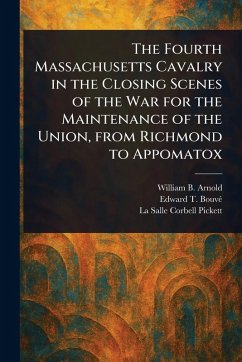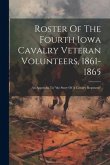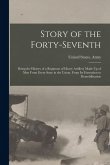"The Fourth Massachusetts Cavalry in the Closing Scenes of the War for the Maintenance of the Union, from Richmond to Appomatox" offers a gripping, firsthand account of a crucial period in American history. Written by William B. Arnold, Edward T. Bouv?nd, and Lasalle Corbell Pickett, this historical record immerses readers in the experiences of the 4th Massachusetts Cavalry as they participated in the final campaigns of the American Civil War. The book details the regiment's involvement in key events, including the Battle of High Bridge, and their relentless pursuit of the Confederate Army from Richmond to Appomattox. This meticulously prepared edition sheds light on the strategies, challenges, and sacrifices faced by the Union Army during these pivotal moments. A valuable resource for anyone interested in military history and the American Civil War, this volume provides a detailed look at the closing scenes of the conflict and the role of the 4th Massachusetts Cavalry in securing the Union victory. Its enduring appeal lies in its authentic portrayal of the war's concluding chapter. This work has been selected by scholars as being culturally important, and is part of the knowledge base of civilization as we know it. This work is in the public domain in the United States of America, and possibly other nations. Within the United States, you may freely copy and distribute this work, as no entity (individual or corporate) has a copyright on the body of the work. Scholars believe, and we concur, that this work is important enough to be preserved, reproduced, and made generally available to the public. We appreciate your support of the preservation process, and thank you for being an important part of keeping this knowledge alive and relevant.
Bitte wählen Sie Ihr Anliegen aus.
Rechnungen
Retourenschein anfordern
Bestellstatus
Storno









